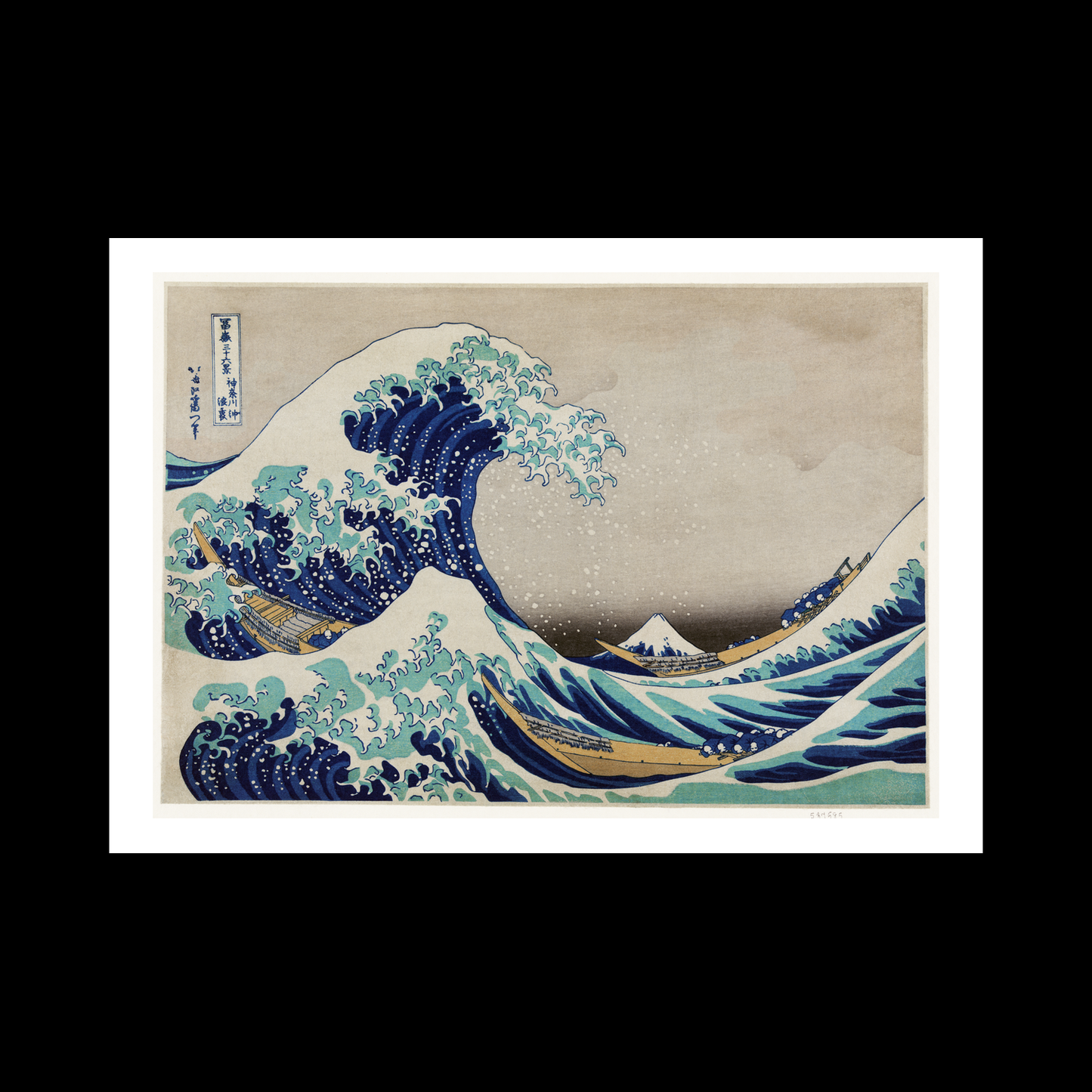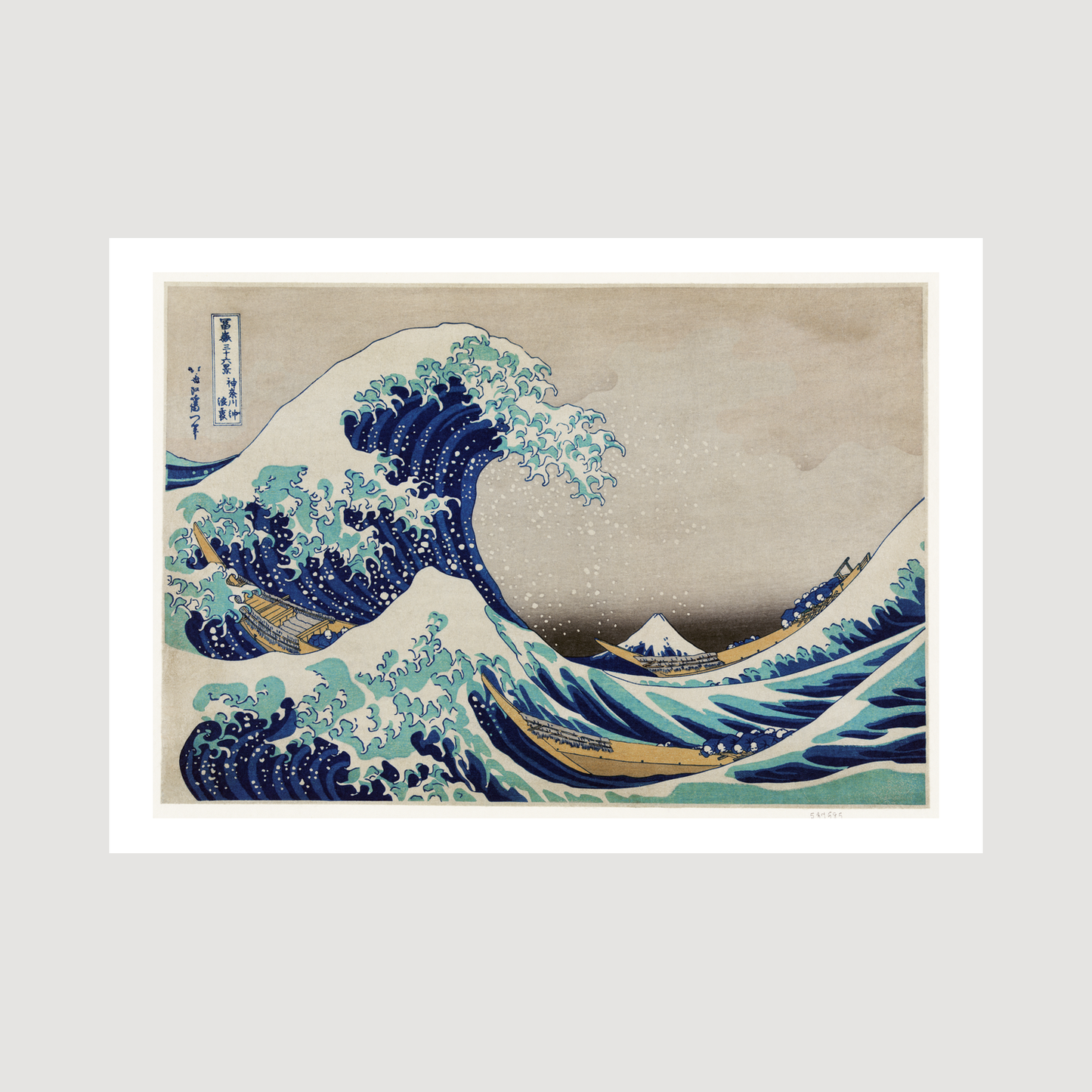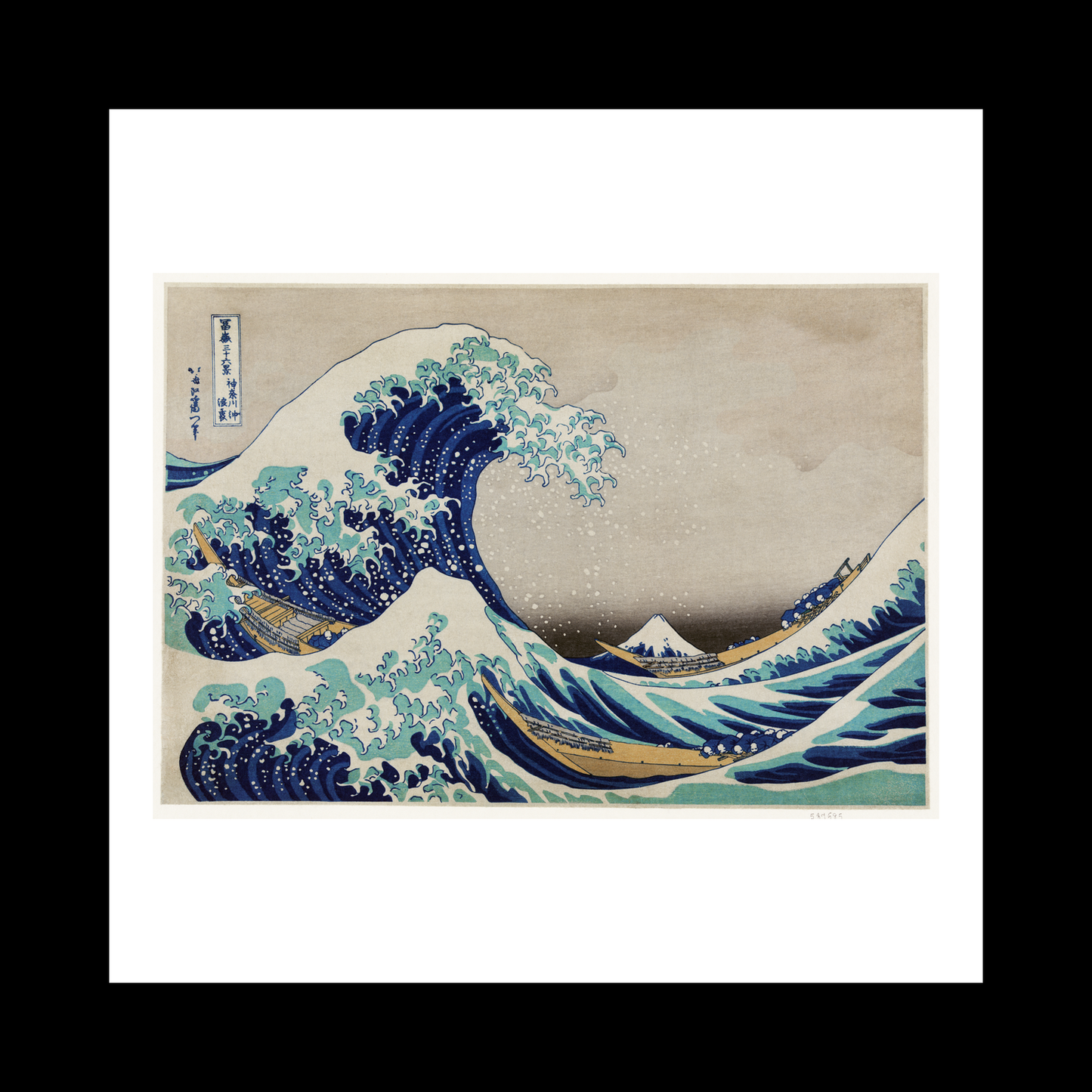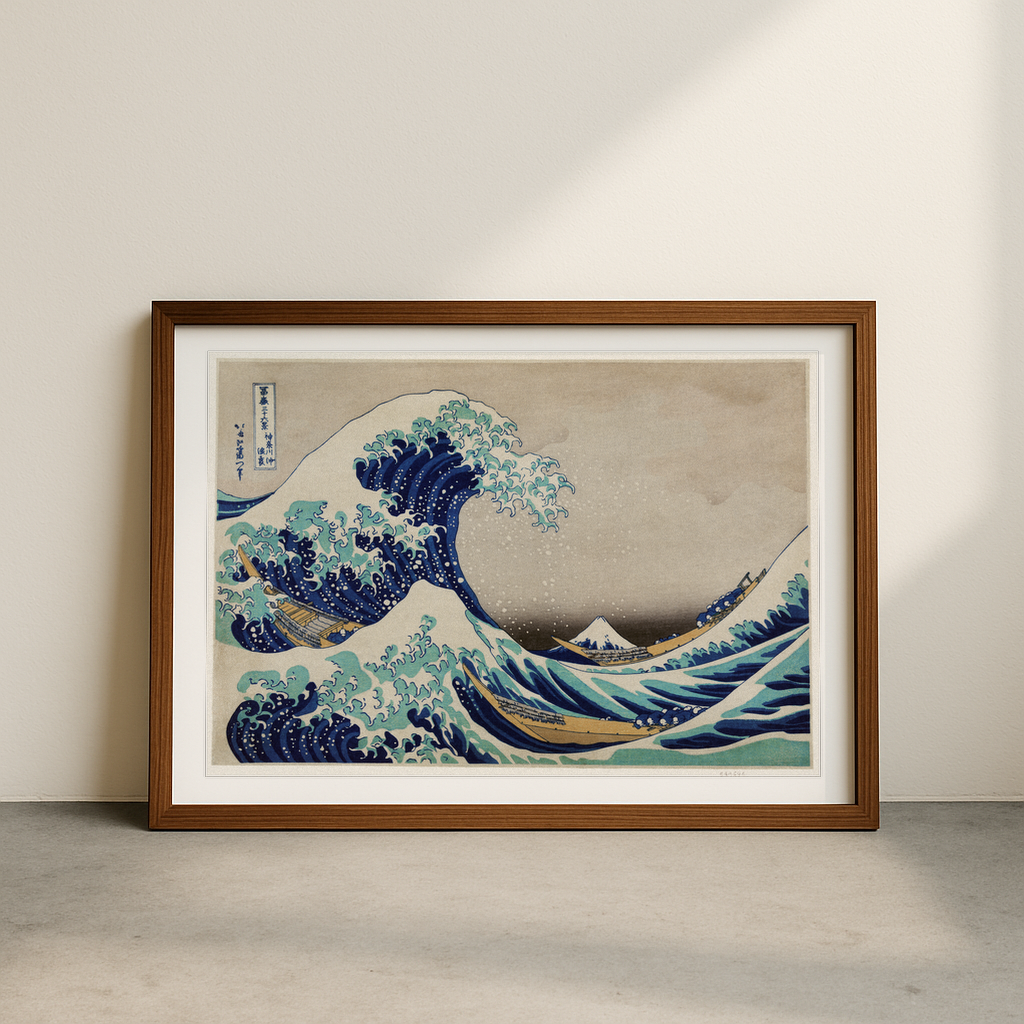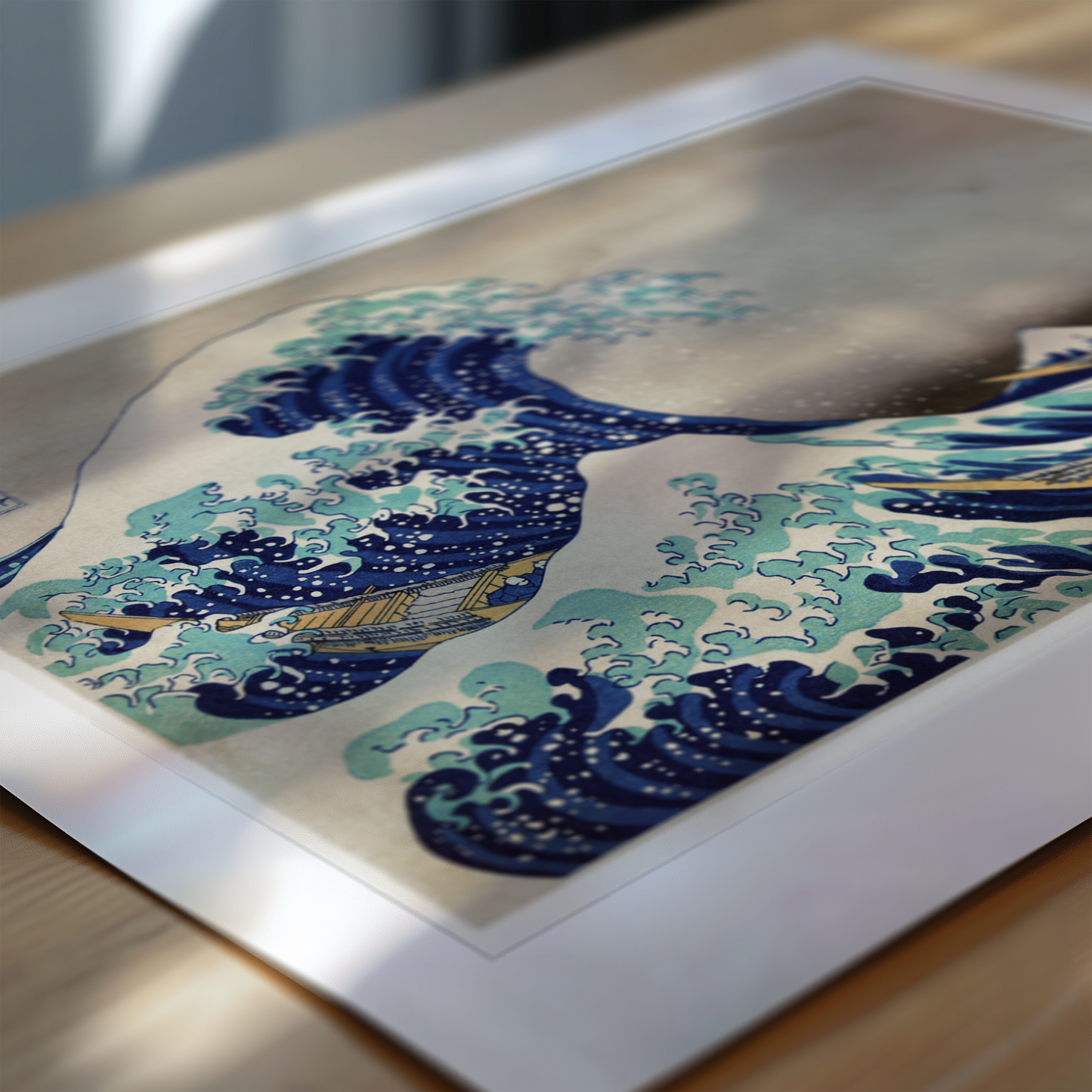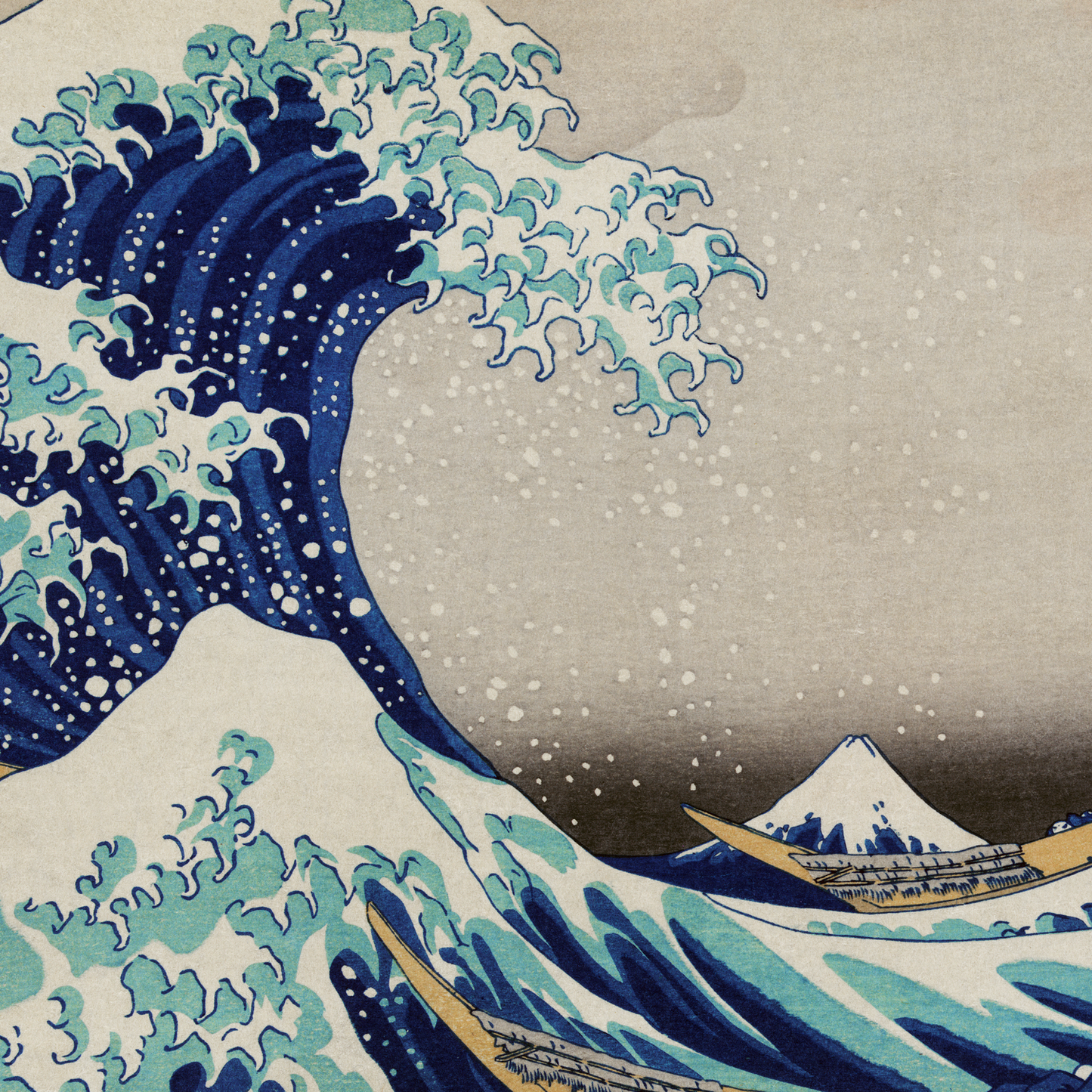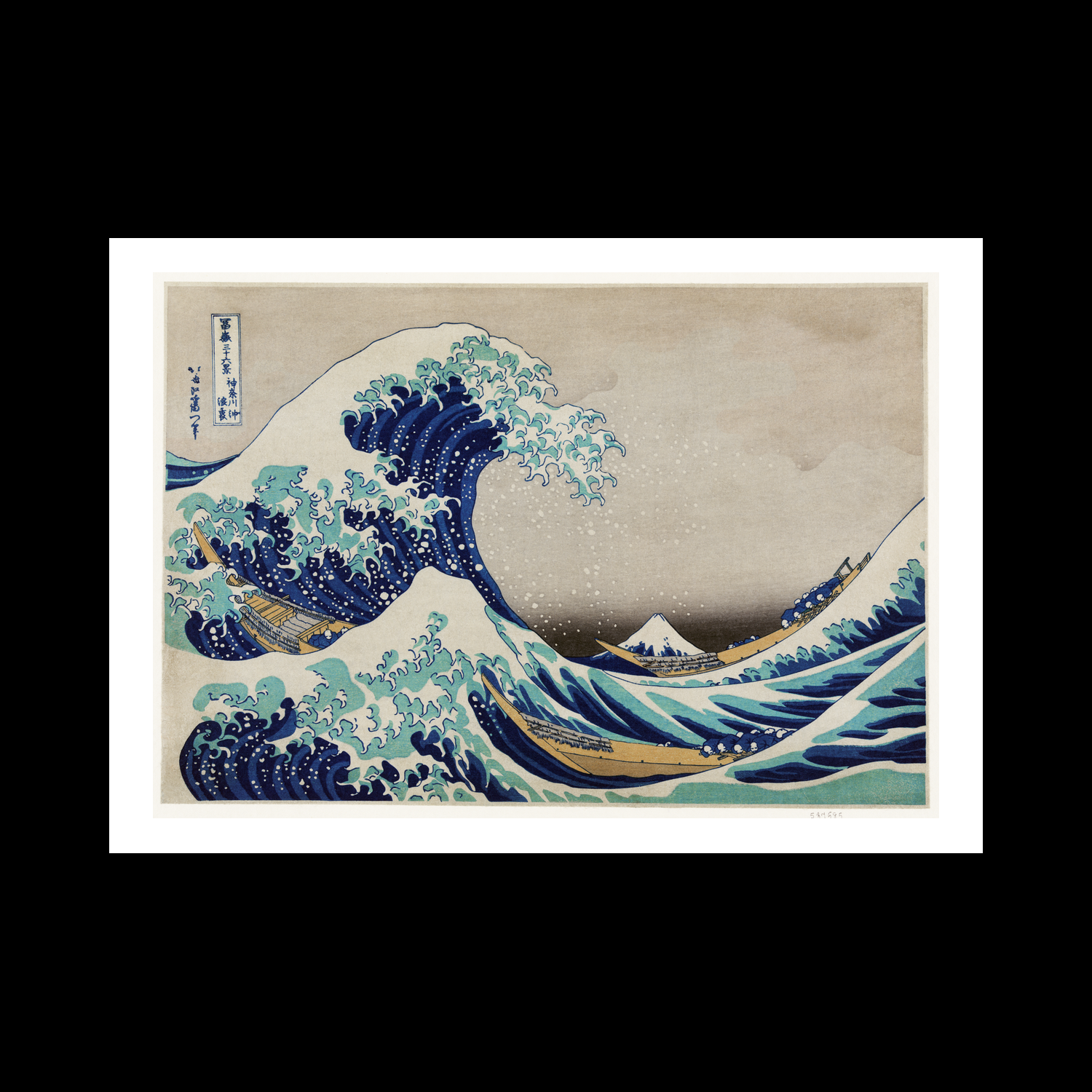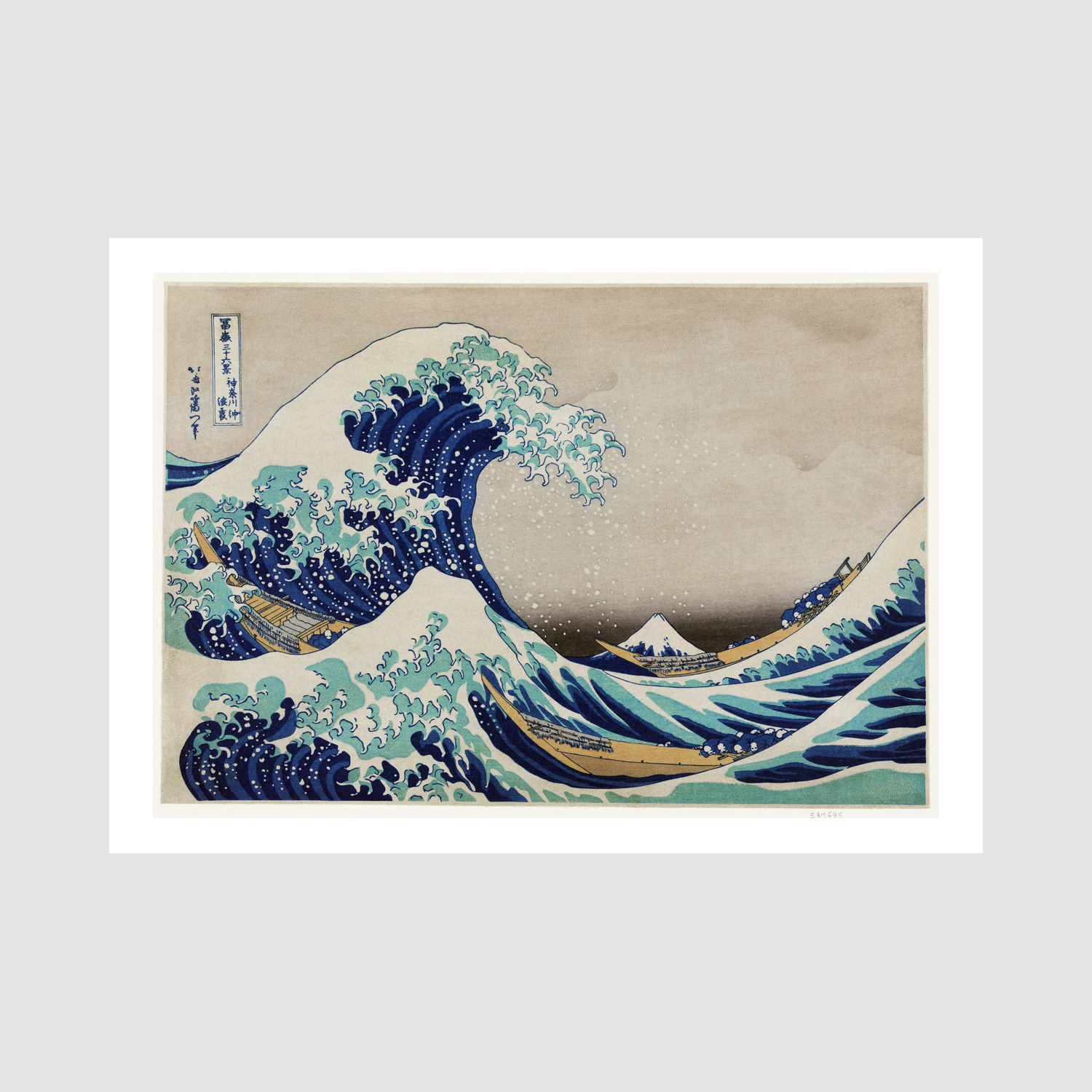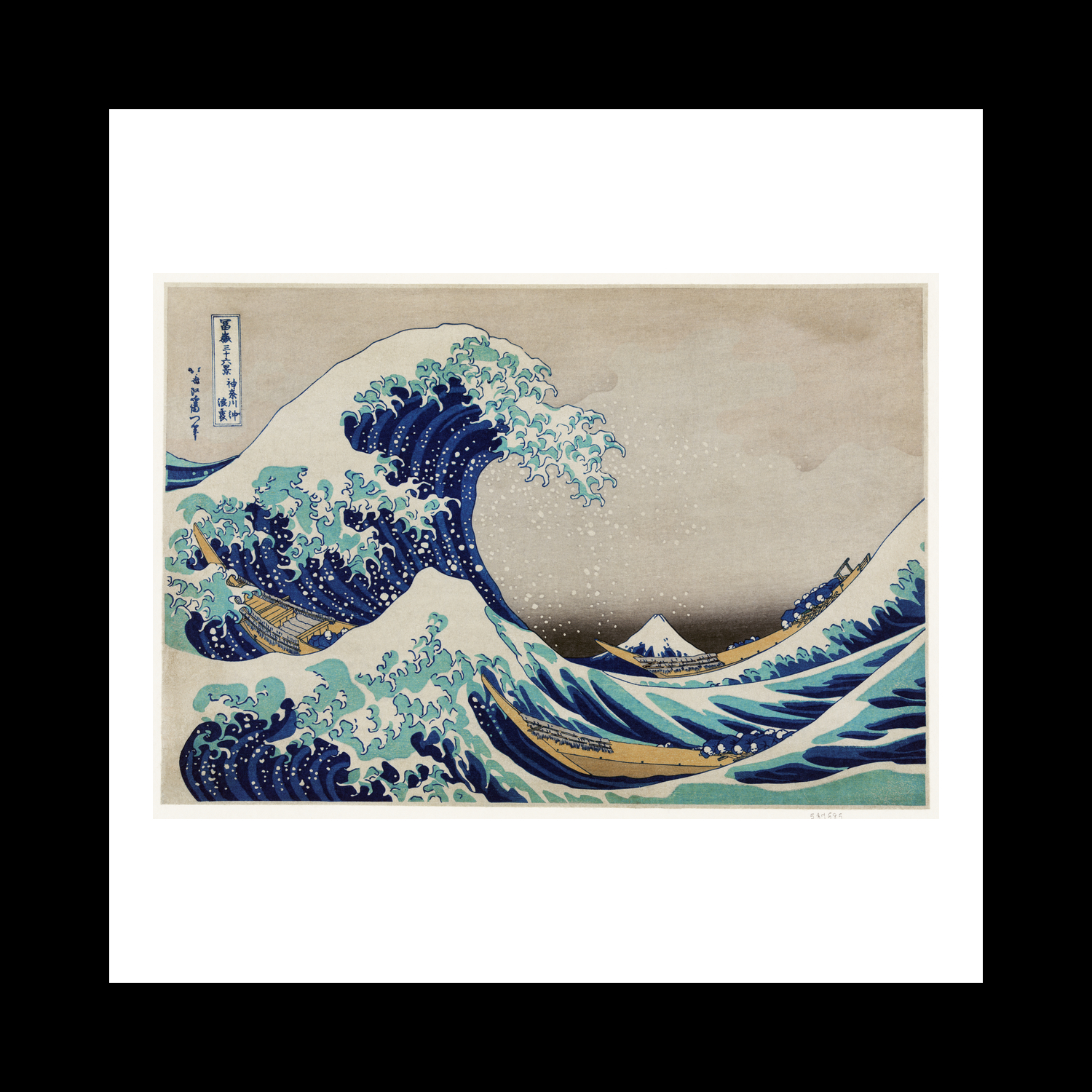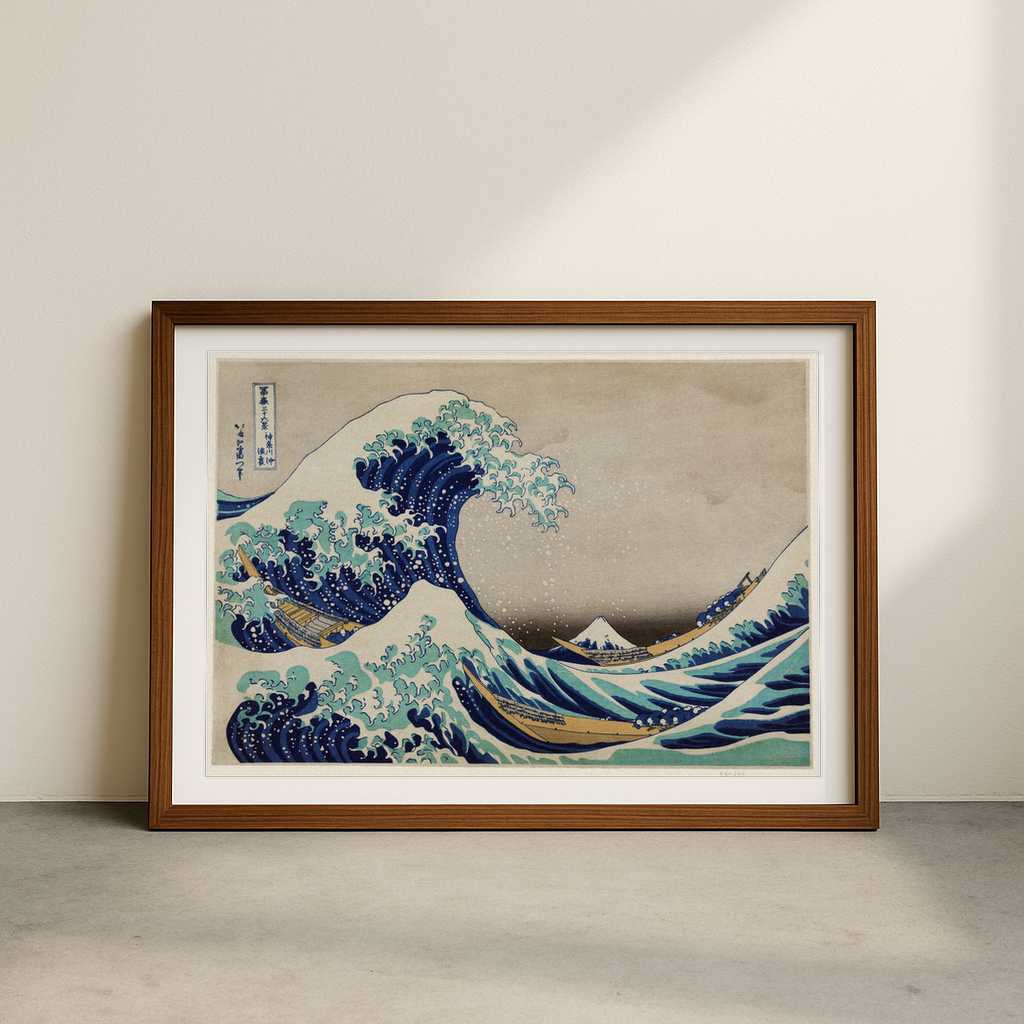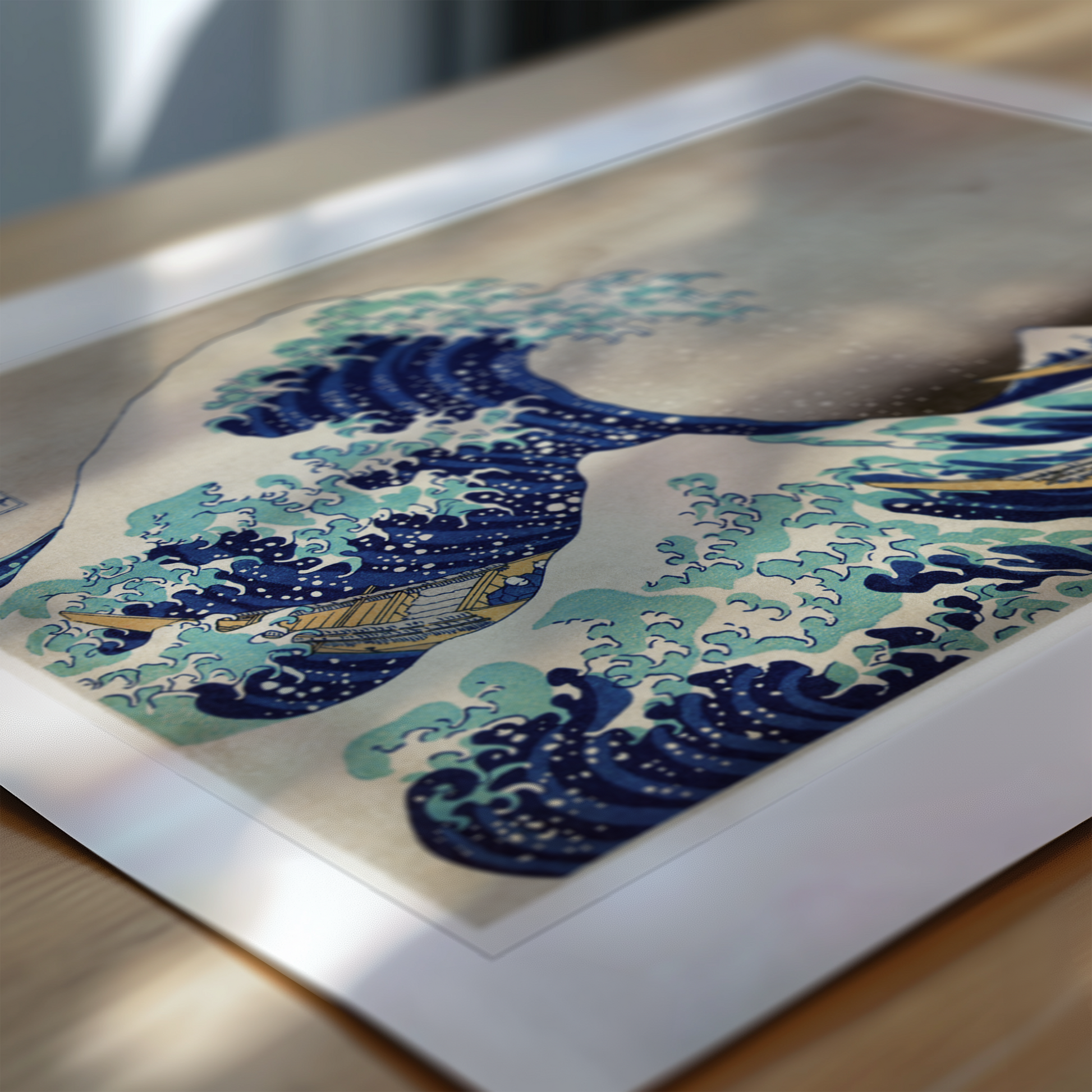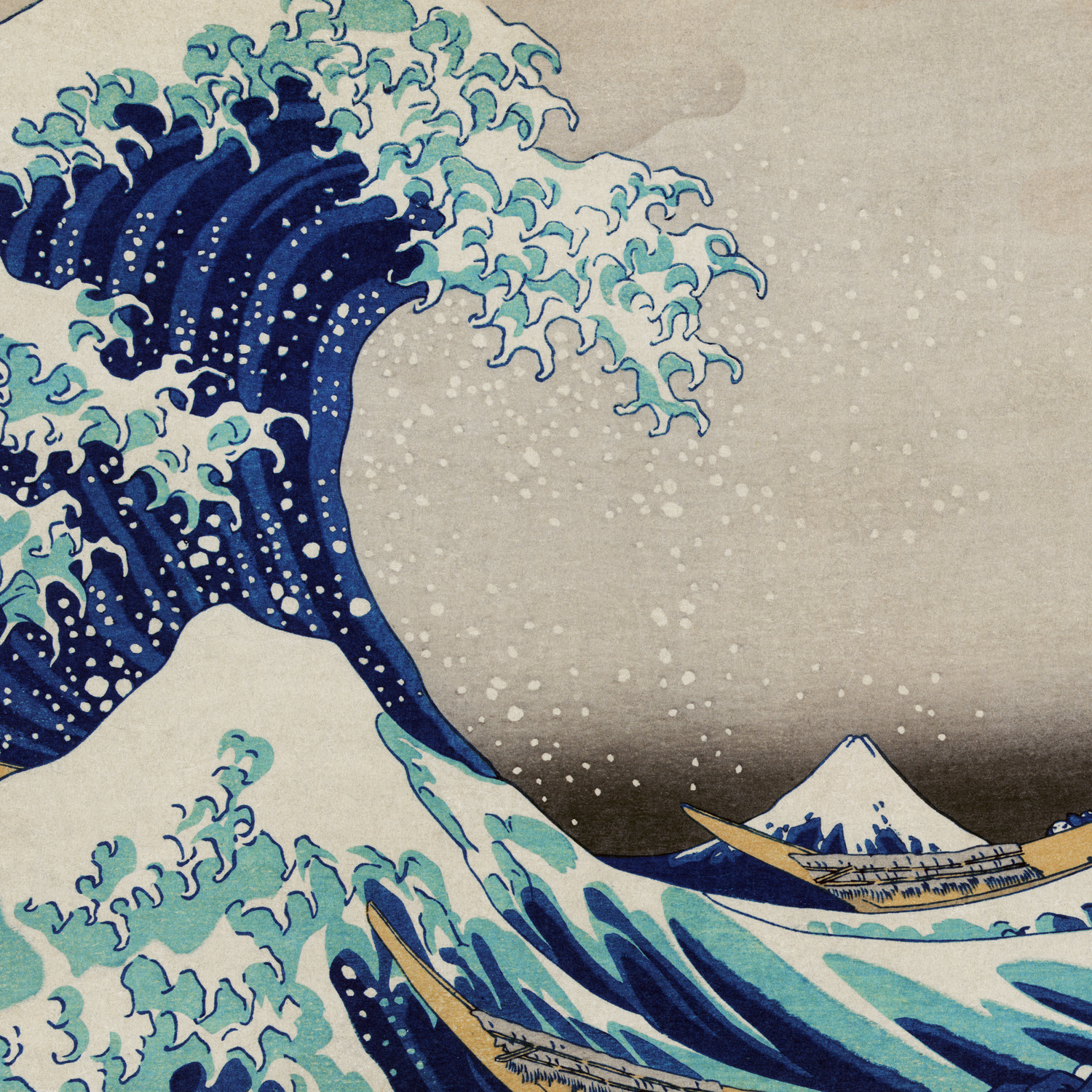1
/
of
6
The Great Wave off Kanagawa
The Great Wave off Kanagawa
Regular price
£12.45 GBP
Regular price
Sale price
£12.45 GBP
Taxes included.
Quantity
Couldn't load pickup availability
"The Great Wave off Kanagawa" by Katsushika Hokusai stands as one of Japan's most recognised artworks from the Edo period. Created around 1830 as part of the "Thirty-six Views of Mount Fuji" series, this woodblock print (ukiyo-e) captures a colossal wave threatening three fishing boats, with Mount Fuji appearing small yet serene in the background.
The composition brilliantly demonstrates Hokusai's mastery of the ukiyo-e technique. The wave's distinctive claw-like foam tendrils show strong influences from both Japanese art and European copper engravings, which were reaching Japan through Dutch traders. The use of Prussian blue pigment, a newly available material at the time, creates the print's striking colour palette and demonstrates Hokusai's eagerness to experiment with new artistic materials.
Created when Hokusai was in his seventies, this piece reflects his lifelong obsession with capturing the power of nature. The artist signed it "Hokusai aratame Iitsu hitsu," meaning "from the brush of Hokusai, changing to Iitsu," indicating his belief that his best work was still ahead of him. The print's dynamic composition, showing humans dwarfed by nature's might while Mount Fuji remains unchanging, embodies the Japanese concept of the sublime in nature and humanity's relationship with it.
The print merges traditional Japanese techniques with modern influences, depicting the everyday courage of Japanese fishermen against the raw power of the sea. Hokusai's attention to detail is evident in the boats' occupants' determined poses and the wave's intricate foam patterns, creating a sense of suspended motion that continues to captivate viewers nearly two centuries later.
View full details
The composition brilliantly demonstrates Hokusai's mastery of the ukiyo-e technique. The wave's distinctive claw-like foam tendrils show strong influences from both Japanese art and European copper engravings, which were reaching Japan through Dutch traders. The use of Prussian blue pigment, a newly available material at the time, creates the print's striking colour palette and demonstrates Hokusai's eagerness to experiment with new artistic materials.
Created when Hokusai was in his seventies, this piece reflects his lifelong obsession with capturing the power of nature. The artist signed it "Hokusai aratame Iitsu hitsu," meaning "from the brush of Hokusai, changing to Iitsu," indicating his belief that his best work was still ahead of him. The print's dynamic composition, showing humans dwarfed by nature's might while Mount Fuji remains unchanging, embodies the Japanese concept of the sublime in nature and humanity's relationship with it.
The print merges traditional Japanese techniques with modern influences, depicting the everyday courage of Japanese fishermen against the raw power of the sea. Hokusai's attention to detail is evident in the boats' occupants' determined poses and the wave's intricate foam patterns, creating a sense of suspended motion that continues to captivate viewers nearly two centuries later.
